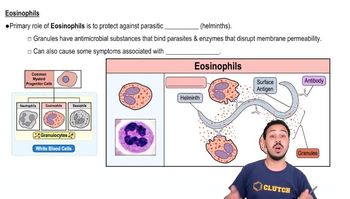Which of the following is false regarding histamine?
a. Histamine is a vasodilator.
b. Histamine increases vascular permeability.
c. Histamine is a pro-inflammatory factor.
d. Histamine is a pyrogen.
e. Histamine is released by leukocytes.
 Verified step by step guidance
Verified step by step guidance Verified video answer for a similar problem:
Verified video answer for a similar problem:
